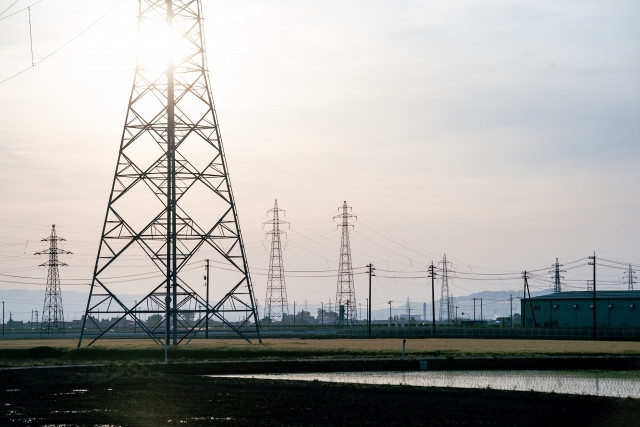Living in Japan, the opportunity to send mail or a package to someone will eventually come up. For domestic mail, sending from a post office or convenience store is easy and convenient. For international mail, using the post office is the easiest way.
In this article, we explain how to send mail and packages when living in Japan. We also introduce the services offered by Japanese post offices.
First Published: 2023-02-02
Updated: 2023-09-20
Table of Contents
- Sending Mail and Packages from Japan Post Office
- Sending Mail and Packages from Japan Convenience Store
- Tips for Sending Parcels in Japan, Useful Japanese Words
- How to Receive Packages in Japan
- Sending International Mail and Packages from Japan
- To Close
Sending Mail and Packages from Japan Post Office

Japan’s post offices are operated by Japan Post Co. Ltd that was established in 2007. As of March 31, 2022, they have over 20,000 post offices around Japan. Aside from postal services like selling stamps, mail and package, and delivery, they also offer insurance services and banking called Japan Post Bank (ゆうちょ銀行 Yuuchou Ginko).
Sending Postcards and Letters

Buying Postcards and Stamps
The price of sending a regular postcard within Japan is 63 yen each, while return postcards are 126 yen each. You can send commercially available postcards or homemade postcards as long as they are within the prescribed standard size and weight, but don’t forget to put stamps on them! Note that postcards that exceed the prescribed standards are treated as “first-class mail (第一種郵便物)”, which is the same category as letters, at varying rates.
Stamp rates for letters vary according to size and weight of the letter. For more information, refer here. Stamps can be bought at post offices and convenience stores. Be careful not to underpay.
There are also rules on where the stamp should be affixed. If the envelope is vertical, stick it on the top-left hand corner of the envelope, and if it is horizontal, stick it on the top-right hand corner.
2. Mailing Using Post Boxes
After affixing the stamps, you can post the envelope in the post box. Don’t forget to seal the envelope properly with glue or double-sided tape.
Most convenience stores these days have post boxes, making it convenient to mail letters. You can find the nearest post office to you using this map, you can search by address or postal code.
If the post box has two letter slots, then the left slot is for regular postcards and letters, while the right slot is for express and irregular mail.
3. Mailing at the Post Office
If you underpay the postal fee, then one of the following may happen:
- Failed to deliver and mail returned to sender.
- Delivered to the recipient and recipient needs to pay the balance unpaid postage.
- Recipient refuses to pay the balance unpaid postage, and mail is returned to the sender.
If you are concerned that this might happen, then use the post office to mail instead of the post box. At the post office counter, you can have the size and weight of the letter weighed on the spot, and the counter assistant will sell you the right amount of postage stamps you need.
Additionally, at the post office counter, you can pay extra fees for special mail, such as “express mail (速達)” for urgent mails, and “registered mail (書留)” for important mail that you can track. These can also be done via post box but the rules are quite complicated, so doing it over the post office counter is recommended.
Sending LetterPack
LetterPack is a nationwide flat rate service by Japan Post that allows packages (clothes, documents, CDs, etc. of up to A4 size and 4kg to be sent.
1. Buying a LetterPack
LetterPacks can be bought at post offices and convenience stores. There are 2 types of LetterPacks:
- LetterPack Plus (Red Colour) : 520 yen, delivers to the person directly and requires recipient’s signature or seal as proof of delivery
- LetterPack Light (Blue Colour) : 370 yen, delivers to recipient’s mailbox
2. Preparing LetterPack for Sending
Once you have put the items for sending inside the LetterPack, write your and the recipient’s address on the envelope in the correct spaces provided. Then, seal up the envelope. You do not need a stamp for LetterPacks.
Remember to peel off the “ご依頼主さま保管用シール (sticker for sender’s safekeeping)”. You can track the parcel using the number printed on the sticker, so keep it safe until the parcel is delivered.
3. Mailing Using Post Box or at the Post Office
You can post LetterPacks at the post office or with a post box. When posting LetterPacks with post boxes that have 2 slots, always use the right side slot. If your parcel cannot fit through the slot, then send from the post office counter during their opening hours.
Aside from LetterPack, there is also ClickPost and Yu-Pack which are commonly used to send products (small items) purchased online at low prices, and Yu-Mail for those who want to send booklets, CDs and other items weighing up to 1 kg. Explore the options and choose a service that best suits your needs.
Sending Yu-Pack
Yu-Pack is a service that allows packages with a total size of 60 cm ~ 170 cm (total sum of 3 sides), and weight of up to 25 kg to be sent. The rate depends on the size of the parcel and its destination.
1. Prepare Consignment Note (送り状)
Yu-Pack consignment notes can be bought/made at post offices, convenience stores that offer Yu-Pack service, online and through the app. For more information, see here. The smartphone app is very convenient as it allows online payment. In addition, you will receive a 180 yen discount.
2. Send the Parcel
Pack up your parcel and send it with the consignment note attached. If you do not have any packing materials, you can buy them from the post office. You can have your parcel collected from your home, but it is recommended to bring it to the post office or convenience store to receive a discount of 120 yen per parcel.
Additionally, if you send other parcels to the same address within a year, you can receive a discount of 60 yen per parcel. To claim the discount, show the previously used Yu-Pack label. If you send multiple parcels to the same address, you can also get a discount of 60 yen off per parcel.
There are many different types of Yu-Pack, including Heavy Yu-Pack (25 ~30 kg parcel), Chilled Yu-Pack (perishables), Golf Yu-Pack (golf equipment), Ski Yu-Pack (ski equipment), Airport Yu-Pack (suitcases, etc.), Same-Day Delivery Yu-Pack (urgent packages) and many more to suit different purposes.
Writer's Pick
Sending Mail and Packages from Japan Convenience Store

Postal service is one of the many convenient services offered by convenience stores in Japan. It is very convenient, especially if you do not have a post office or courier office near you.
1. Find a Convenience Store that is Partnered with Post Office or Courier Service
Not all convenience stores in Japan offer mail and package delivery services. First, look for a convenient store that has a partnership with a courier service or post office. Note that large items such as furniture, and items that need to be chilled cannot be sent from a convenient store.
Convenience stores where you can send packages are easily identified by signs and banners. You can also check the websites of post offices and courier companies.
2. Complete Packing Before Sending
It is not possible to pack parcels at the convenience store as there is no place, so complete your packing at home beforehand. Wrap fragile items and easily damaged items that could be damaged by impact with cushioning material that can be bought at hardware stores and 100 yen shops.
When packing, make sure there are no gaps between the items and the cardboard box. Fill up gaps with cushioning material or any crumpled up paper. After packing, shake the box from side to side, up and down; if it rattles, pack more filling between gaps. Once no rattling is heard when the box is shaken, seal it up tightly. Packing as small as possible is more economical as it saves on shipping costs.
3. Go to the Convenience Store and Fill in a Delivery Slip
Take your parcel to a convenience store that handles deliveries. Ask the staff for a delivery slip and fill it in. There are 2 types of delivery slips; prepaid and pay-on-delivery. Prepayment is used when the sender pays for the delivery in advance, while pay-on-delivery is used when the recipient pays upon receiving the parcel.
Write the address down clearly and carefully; otherwise the parcel may be delivered incorrectly.
4. Pay the Delivery Fee
If you choose prepayment, then pay the fee at the convenience store’s cashier. The convenience store staff will measure the size and weight of the parcel to determine the fee. If you choose pay-on-delivery, then you do not need to pay anything.
5. Receive Copy of the Slip
After paying the fee, you will receive a copy of the slip. Keep it safe as you will need it when making enquiries about the parcel or dealing with any related problems like misdelivery or missing parcel.
Tips for Sending Parcels in Japan, Useful Japanese Words
✉️ A lesson on useful Japanese words to know when sending parcels in Japan. 👇 Read the full details about sending and...
Posted by WeXpats on Tuesday, September 19, 2023
How to Receive Packages in Japan

Packages that are sent to you are generally received at your home address. It is advisable to specify the time and date so that you can receive the delivery when you are at home. If you live in an apartment with delivery boxes, you do not need to be at home to receive your parcel. The mailman will deposit your parcel in an available delivery box, and slip the delivery note into your mailbox.
The “okihai (置き配)” service is also quite convenient. This is a service where packages are left at your doorstep or a designated area, and was popularised after the spread of the Coronavirus in 2020. It is convenient as packages can be received even when you are not home, but there is a risk of theft, so be extra careful when using this service.
Some delivery companies offer a service where they deliver parcels to a convenience store near your workplace or school. If you select “convenience store pick-up (コンビニ受け取り)” on the delivery website, you can specify the convenience store to be delivered to. This service is recommended for people who are busy and not home much, and do not have delivery boxes at their place. It is convenient to drop by the convenience store to collect your parcel on the way home.
Sending International Mail and Packages from Japan

In this part, we will explain how to send international mail to friends and family in your home country.
Post Office is Highly Recommended
Using the post office is the easiest and most recommended way to send mail and packages from Japan to a foreign country. There are 4 options available:
- EMS (Express Mail Service) : more expensive but is guaranteed, fast and safe delivery (maximum 30 kg)
- Airmail : second fastest after EMS
- SAL (Economy Air) : faster than sea mail, cheaper than airmail
- Seamail : cheapest but takes longer (months)
Note that depending on the coronavirus situation, there may be disruptions to international mail and package delivery services. Check with the post office for the latest situation.
Sending International Postcards
The process and rules for sending postcards overseas is the same but the rates differ. Sending postcards overseas by airmail costs 70 yen per postcard, and by surface mail (land and sea) costs 60 yen per postcard.
Prohibited Items for International Mail
When sending gifts or souvenirs to friends and family, keep in mind that there are certain items that are banned. Prohibited items include alcohol, items containing alcohol, spray, perfume, e-cigarettes, power banks, flammables, dangerous goods, etc. For more information, check here.
Fill In a Delivery Invoice
When sending goods overseas, you may need to fill in an invoice. An invoice is a document used for customs declarations and inspections. It should include the specific name, number and weight of the parcel contents. The description of the contents must be written in English, or in the language of the destination country. The type and number of documents required varies from country to country, so check the requirements in advance.
To Close

In this age of digital communication, Japan is a rarity with its tradition of sending handwritten letters, postcards, and greeting cards still going strong. Join in on Japanese traditions like sending New Year greetings cards, or spread joy to friends and family overseas. In Japan, mail and packages can be sent not only from post offices but also convenience stores. It is incredibly convenient so make good use of it.



































